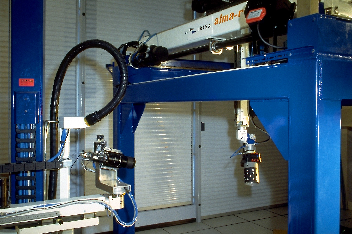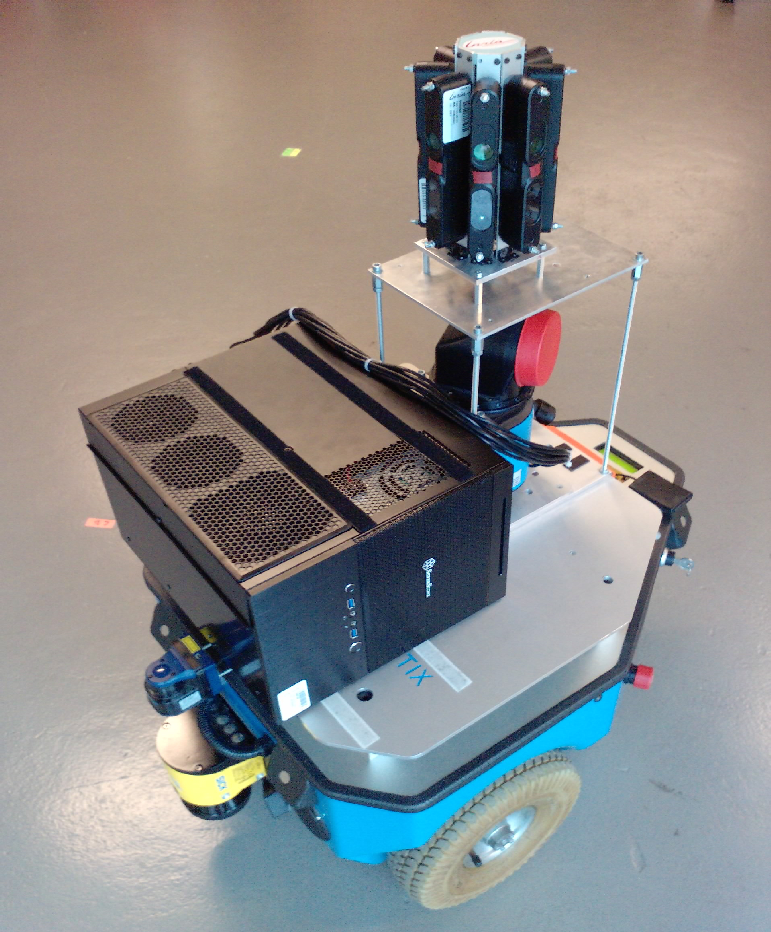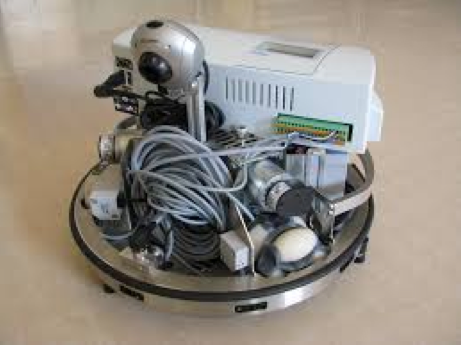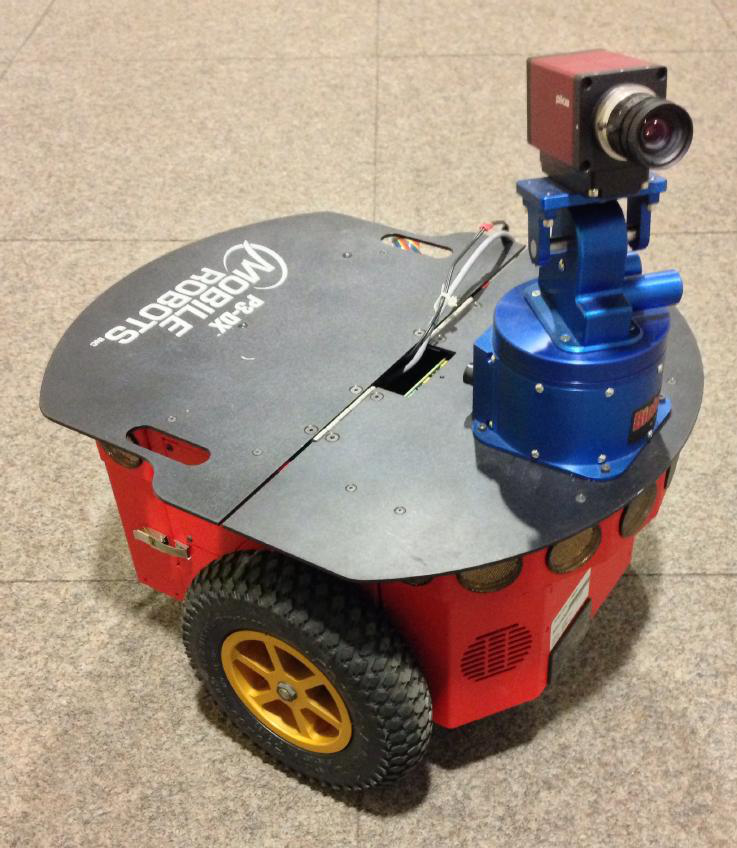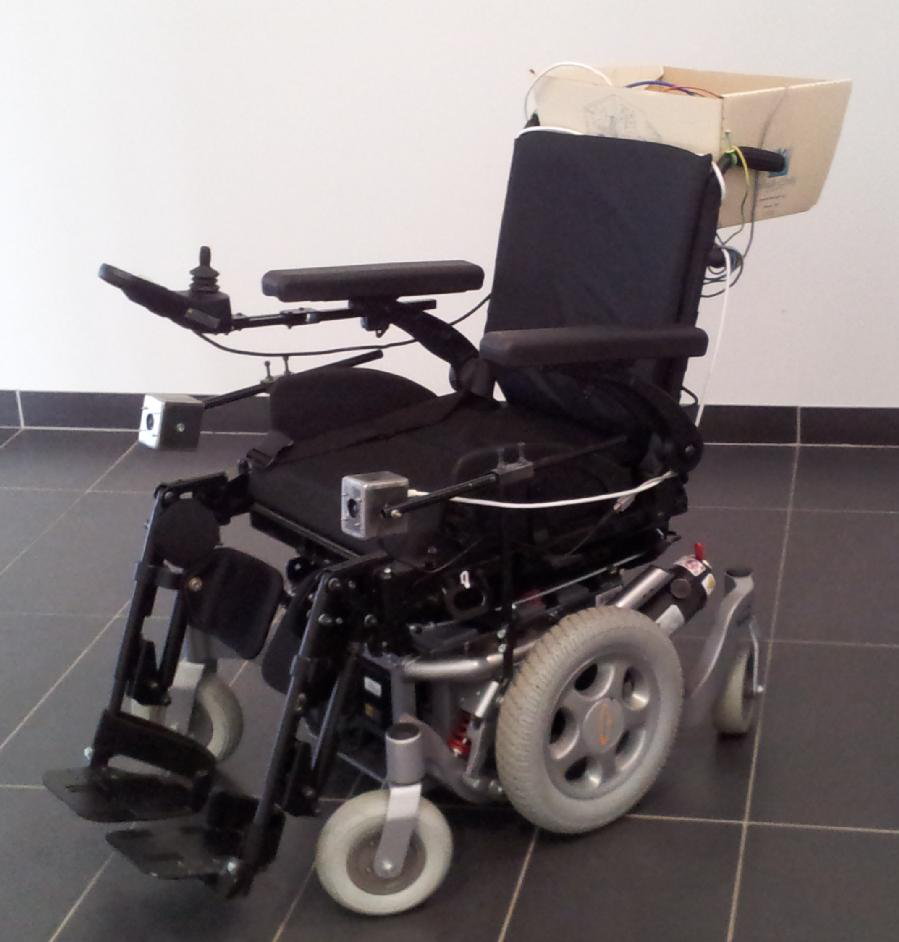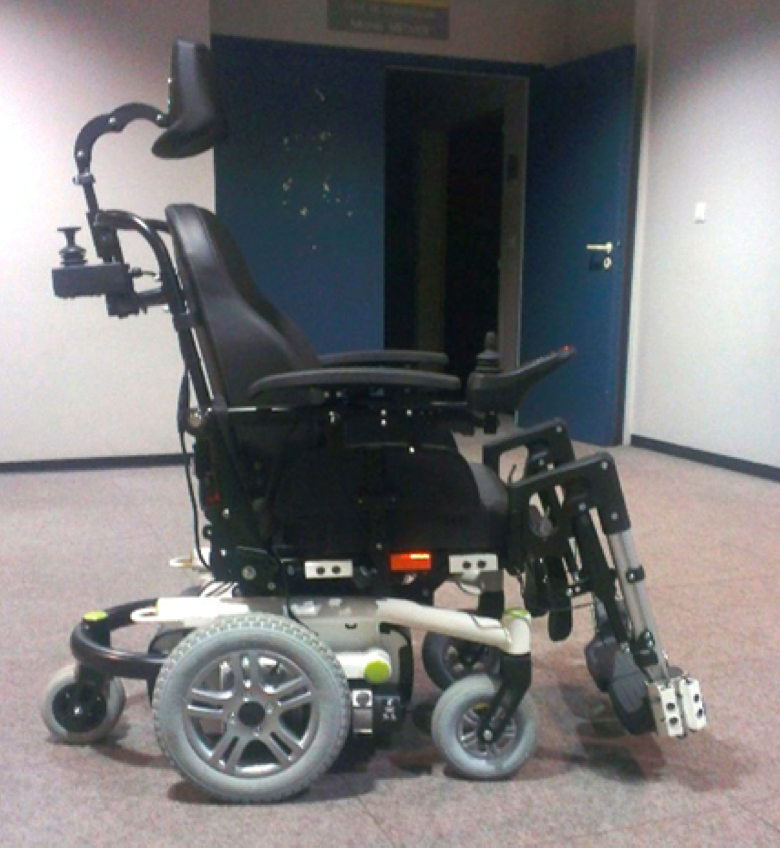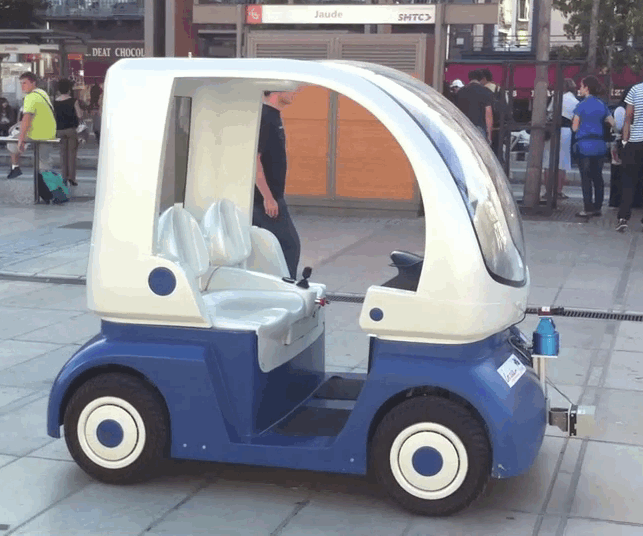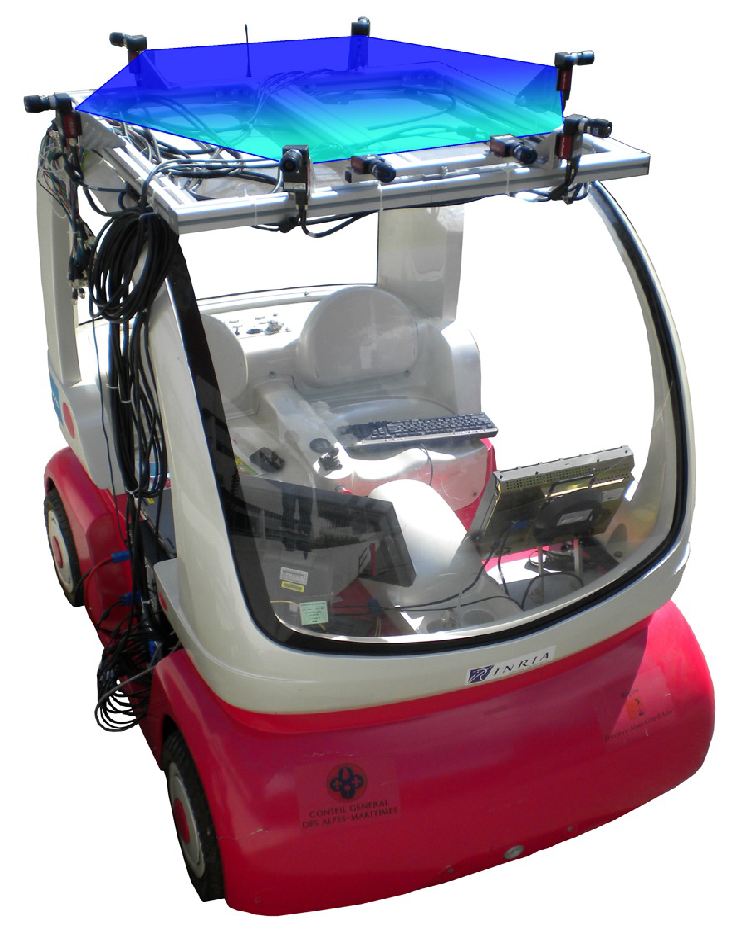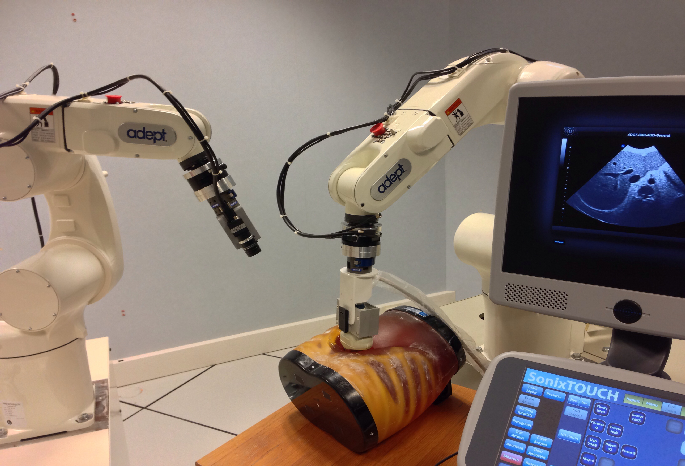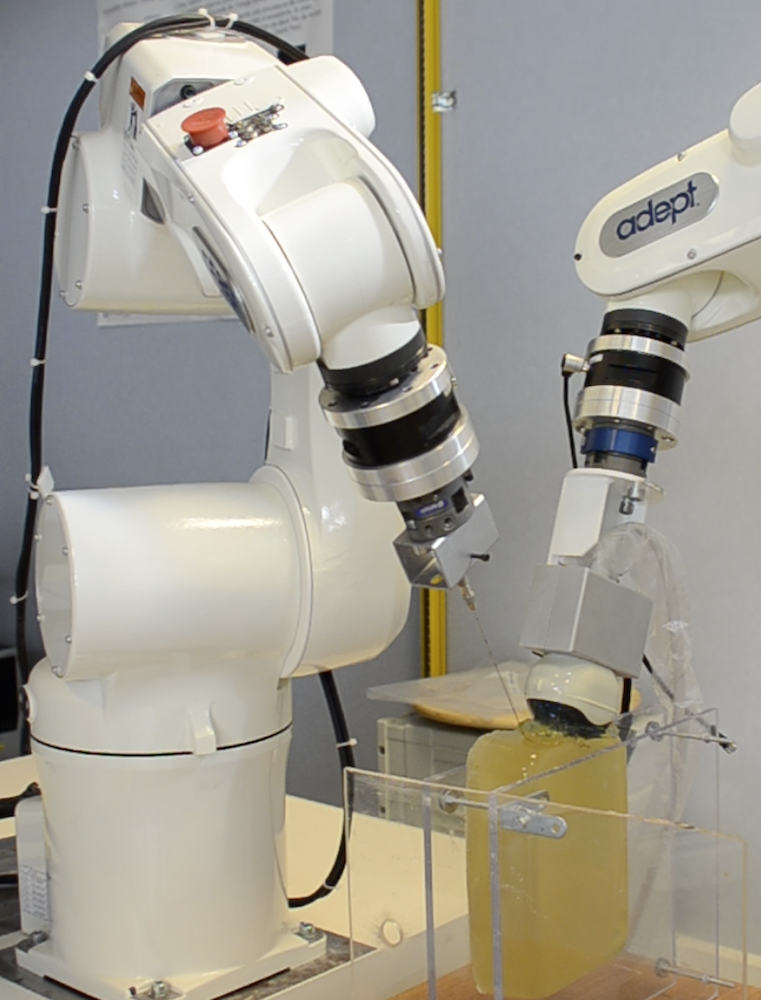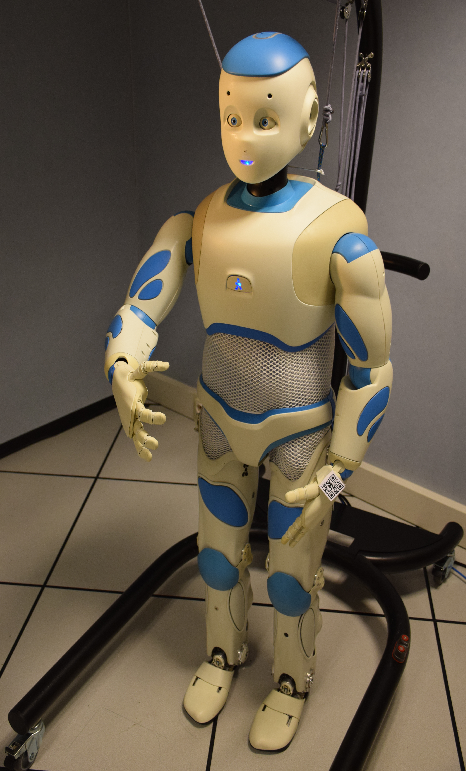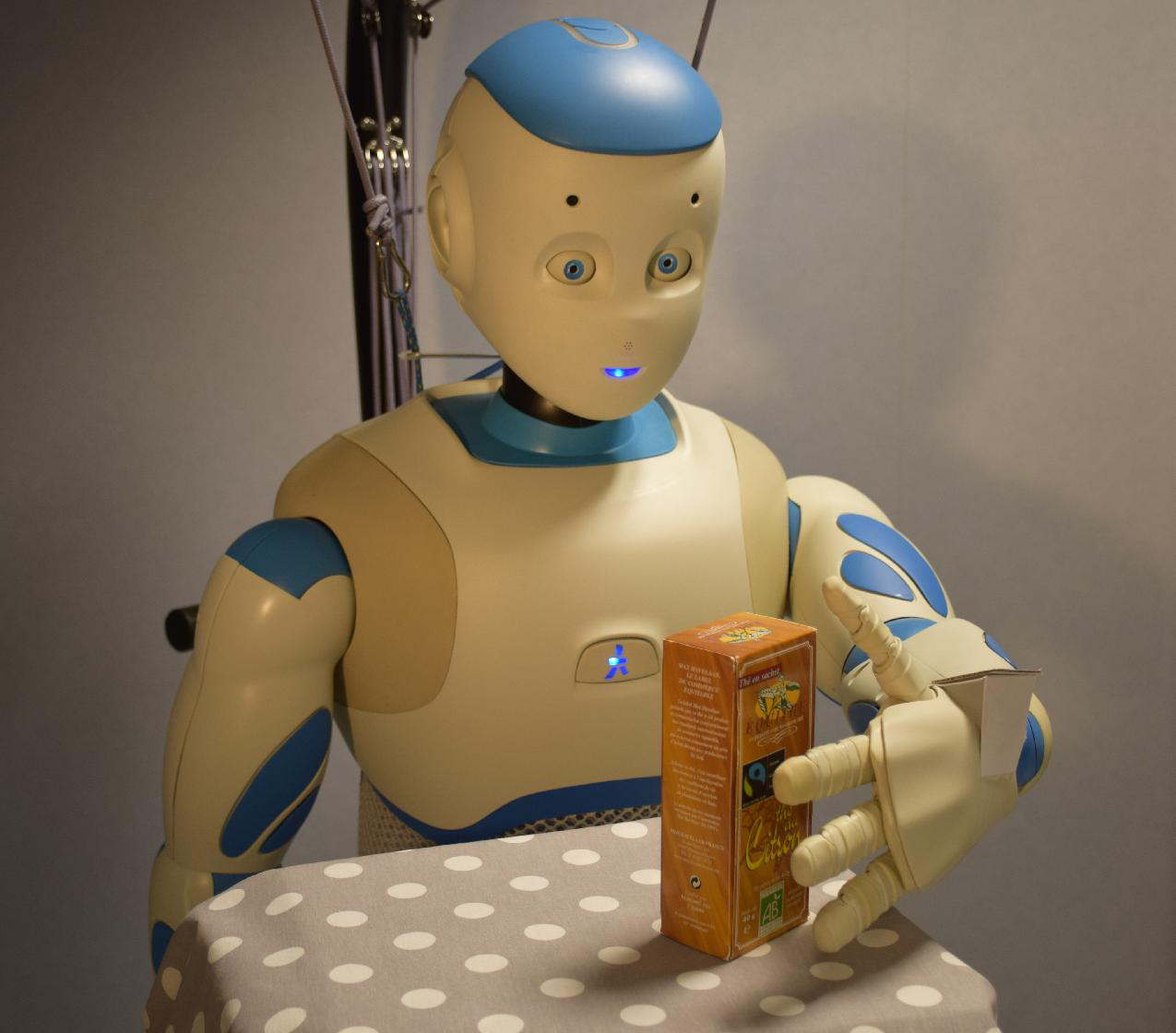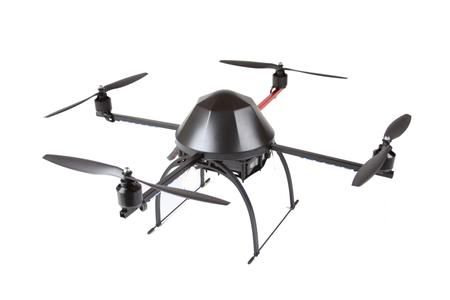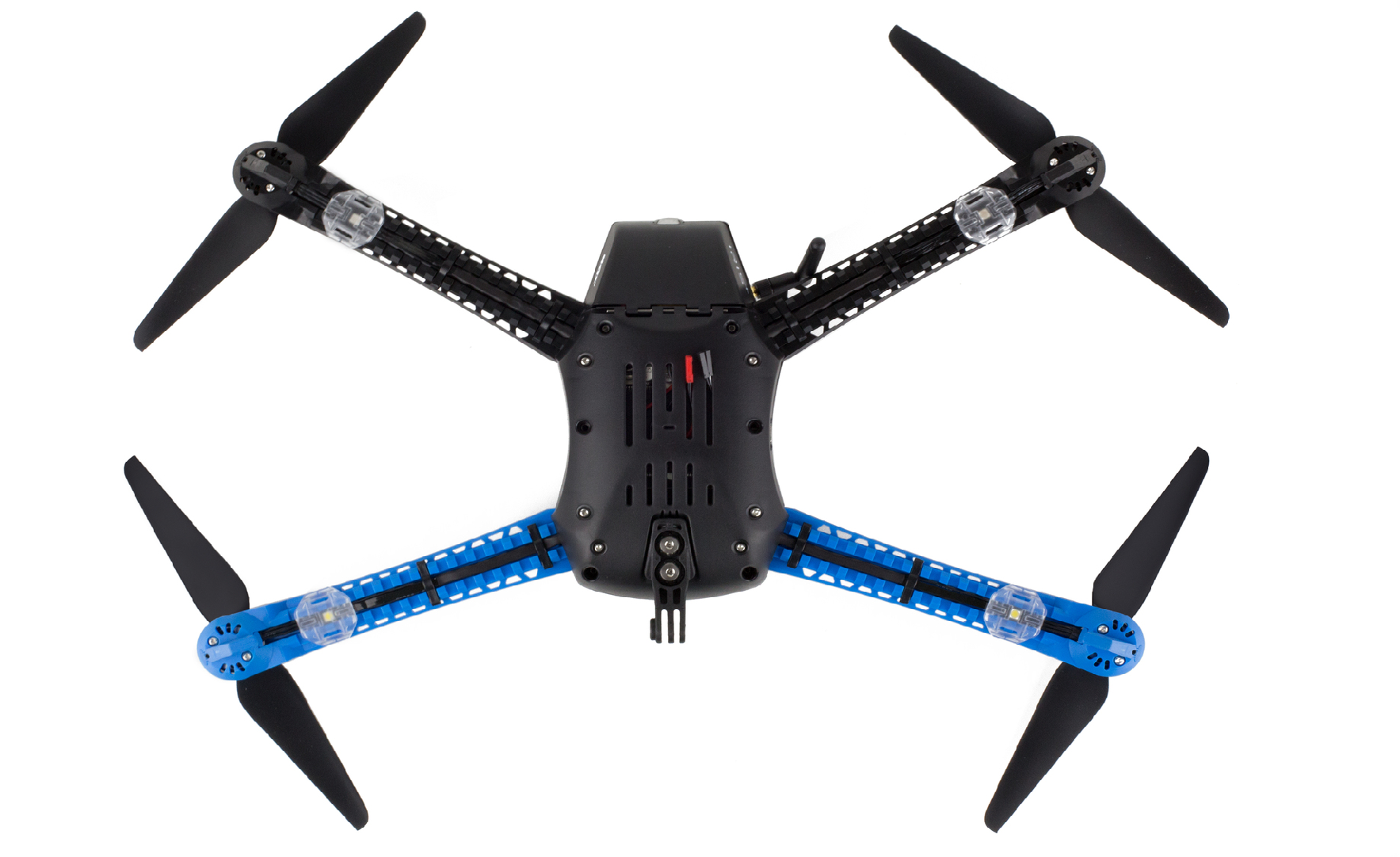Section: New Software and Platforms
Platforms
Robot vision platforms
Participant : Fabien Spindler [correspondant] .
We exploit two industrial robotic systems built by Afma Robots in the nineties to validate our researches in visual servoing and active vision. The first one is a Gantry robot with six degrees of freedom, the other one is a cylindrical robot with four degrees of freedom (see Fig. 2 ). These robots are equipped with cameras. The Gantry robot allows also to embed grippers on its end-effector.
Seven papers published by Lagadic in 2014 enclose results validated on this platform [12] , [18] , [21] , [24] , [47] , [51] , [52] .
Mobile robotics platforms
Participants : Fabien Spindler [correspondant] , Erwan Demairy, Marie Babel, Patrick Rives.
Indoor mobile robots
For fast prototyping of algorithms in perception, control and autonomous navigation, the team uses Hannibal in Sophia Antipolis, a cart-like platform built by Neobotix (see Fig. 3 .a), and, in Rennes, a Robotino from Festo (see Fig. 3 .b) and Pioneer 3DX from Adept (see Fig. 3 .c). These platforms are equipped with various sensors needed for Slam purposes, autonomous navigation and sensor-based control.
Moreover, to validate the researches in personally assisted living topic (see 6.2.1 ), we have in Rennes a six wheel electric wheelchair from Penny and Giles Drives Technology (see Fig. 3 .d) and a five wheel electric wheelchair from You-Q (see Fig. 3 .e). The control of the wheelchair is performed using a plug and play system between the joystick and the low level control of the wheelchair. Such a system lets us acquire the user intention through the joystick position and control the wheelchair by applying corrections to its motion. The wheelchairs have been fitted with cameras and eleven ultrasound sensors to perform the required servoing for assisting handicapped people.
Note that eleven papers exploiting the indoors mobile robots were published this year [16] , [29] , [30] , [31] , [33] , [37] , [43] , [41] , [42] , [56] , [58] .
Outdoor mobile robots
The team exploits also Cycab urban electrical cars (see Figs. 3 .f and 3 .g). Two vehicles in Sophia Antipolis and one in Rennes are instrumented with cameras and range finders to validate researches in the domain of intelligent urban vehicle. Cycabs were used as experimental testbeds in several national projects.
Two papers published by Lagadic in 2014 enclose experimental results obtained with these outdoor mobile robots [11] , [14] .
|
||||||
|
||||||
|
Technological Development Action (ADT) P2N
The ADT P2N aims at sharing existing and in development codes between the Lagadic and E-Motion teams in the field of autonomous navigation of indoor robots. These codes are also used in the platforms involved in the large-scale initiative action PAL (Personnally Assisted Living, see Section 8.2.6 ).
This year, the most notable activities for this ADT have been to:
-
make the Slam module developed by Lagadic usable by the E-Motion navigation module;
-
develop the core architecture running under ROS supporting the different sensors and platforms available in Sophia-Antipolis.
-
demonstrate the social based navigation methods on the Hannibal platform (see Section 6.2.3 )
Medical robotics platforms
Participants : Fabien Spindler [correspondant] , Alexandre Krupa.
This testbed is of primary interest for researches and experiments concerning ultrasound visual servoing applied to probe positioning, soft tissue tracking or robotic needle insertion tasks described in Section 6.5 .
This platform is composed by two Adept Viper six degrees of freedom arms (see Fig. 4 .a). Ultrasound probes connected either to a SonoSite 180 Plus or an Ultrasonix SonixTouch imaging system can be mounted on a force torque sensor attached to each robot end-effector.
We designed an experimental setup to test an autonomous robotic needle insertion method based on visual servoing 6.5.3 . The experimental setup is composed with a gelatin phantom simulating soft tissues, a flexible biopsy needle actuated by an Adept Viper arm and a 3D ultrasound probe held by the second Adept Viper arm (see Fig. 4 .b).
This year, six papers enclose experimental results obtained with this platform [13] , [34] , [35] , [48] , [49] , [50] .
|
Humanoid robot
Participants : Giovanni Claudio, Fabien Spindler [correspondant] .
Romeo is a humanoid robot from Aldebaran Robotics which is intended to be a genuine personal assistant and companion. In September, we were the first of the four European research laboratories that acquire a Romeo. For the moment only the upper part of the body (arms, head) is working. This research platform is now being used to validate our researches. We developed a first demonstration that make use of visual servoing and visual tracking approaches developed in the team to grasp a box and deliver it to a human (see Fig. 5 ).
Unmanned Aerial Vehicles (UAVs)
Participants : Fabrizio Schiano, Paolo Robuffo Giordano.
In 2014 the team also started some activities involving perception and control for single and multiple quadrotor UAVs, especially thanks to a grant from “Rennes Métropole” (see Section 8.1.4 ). To this end, we purchased two quadrotors from Mikrokopter Gmbh, Germany (Fig. 6 .a), and one quadrotor from 3DRobotics, USA (Fig. 6 .b). These quadrotors will be used as robotic platforms for testing a number of single and multiple flight control schemes with a special attention on the use of onboard vision as main sensory modality.


